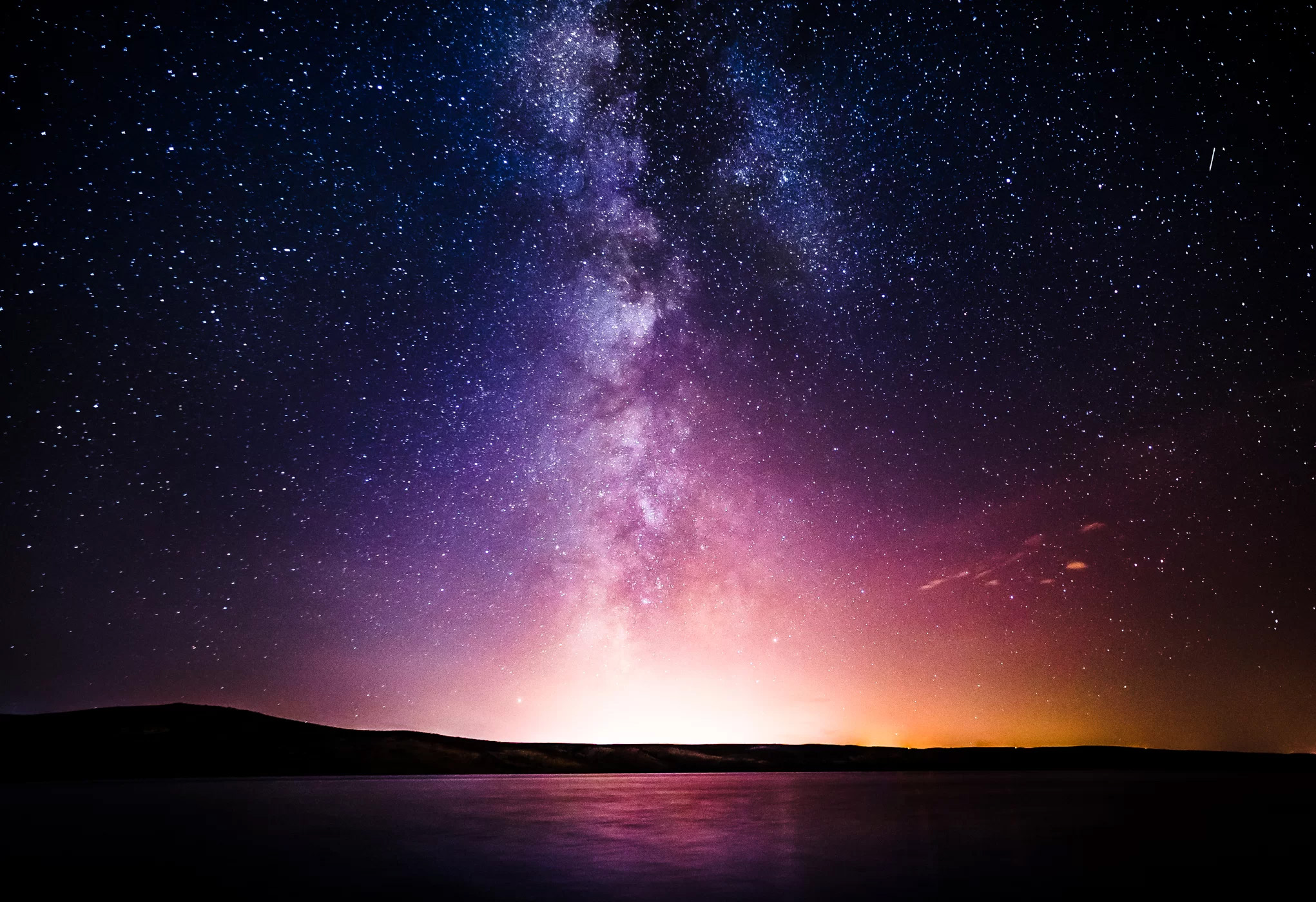Millions of Black Holes Are Hiding in Our Galaxy. Here's How Astronomers Plan to Find Them.
It's time to find all the missing black holes.

It's time to find all the missing black holes.
That's the argument advanced by a pair of Japanese astrophysicists, who wrote a paper proposing a new search for millions of "isolated black holes" (IBHs) that likely populate our galaxy. These black holes, lost in the darkness, sip matter from the interstellar medium — the dust and other stuff floating between stars. But that process is inefficient, and a great deal of the matter gets expelled into space at high speeds. As that outflow interacts with the surrounding environment, the researchers wrote, it should produce radio waves that human radio telescopes can detect. And if astronomers can sift out those waves from all the noise that's in the rest of the galaxy, they might be able to spot these unseen black holes.
"A naive way to observe IBHs is through their X-ray emission," the researchers wrote in their paper, which has not yet been formally peer reviewed and which they made available July 1 as a preprint on arXiv.
Related: 9 Ideas About Black Holes That Will Blow Your Mind
Why is that? As black holes suck the matter from space, that matter at its fringes accelerates and forms what’s known as an accretion disk. The matter in that disk rubs against itself as it spins toward the event horizon— a black hole's point of no return — spitting out X-rays in the process. But isolated black holes, which are small compared to supermassive black holes, don't emit a great deal of X-rays this way. There simply isn't enough matter or energy in their accretion disks to create large X-ray signatures. And past searches for IBHs using X-rays have failed to produce conclusive results.
"These outflows can possibly make the IBHs detectable in other wavelengths," the researchers, Daichi Tsuna of the University of Tokyo and Norita Kawanaka of Kyoto University, wrote in their paper. "The outflows can interact with the surrounding matter and create strong collisionless shocks at the interface. These shocks can amplify magnetic fields and accelerate electrons, and these electrons emit synchrotron radiation in the radio wavelength."
Related: 9 Weird Facts About Black Holes
Get the Space.com Newsletter
Breaking space news, the latest updates on rocket launches, skywatching events and more!
In other words, the outflow sliding through the interstellar medium should get electrons moving at speeds that produce radio waves.
"Interesting paper," said Simon Portegies Zwart, an astrophysicist at Leiden University in the Netherlands, who was not involved in Tsuna and Kawanaka's research. Portegies Zwart has also studied the question of IBHs, also known as intermediate-mass black holes (IMBHs).
"It would be a great way to find IMBHs," Portegies Zwart told Live Science. "I think that with LOFAR [the Low-Frequency Array in the Netherlands], such research should already be possible, but the sensitivity may pose a problem."
IBHs, Portegies Zwart explained, are thought of as a "missing link" between the two types of black holes astronomers can detect: stellar-mass black holes that can be two to possibly 100 times the size of our sun, and supermassive black holes, the gargantuan beasts that live at the cores of galaxies and are hundreds of thousands of times the size of our sun.
Stellar-mass black holes are occasionally detectable in binary systems with regular stars, because the binary systems can produce gravitational waves and companion stars can provide fuel for large X-ray bursts. And supermassive black holes have accretion disks that emit so much energy that astronomers can detect and even photograph them.
But IBHs, in the midrange between those two other types, are far more difficult to detect. There are a handful of objects in space that astronomers suspect might be IBHs, but those results are uncertain. But past research, including a 2017 paper in the journal Monthly Notices of the Royal Astronomical Society, which Portegies Zwart co-authored, suggests millions of them could be hiding out there.
Tsuna and Kawanaka wrote that the best prospect for a radio survey of IBHs probably involves using the Square Kilometre Array (SKA), a multi-part radio telescope due to be built with sections in South Africa and Australia. It's slated to have a total radio-wave collecting area of 1 square kilometer (0.39 square miles). The researchers estimate that at least 30 IBHs emit radio waves that the SKA will be able to detect during its first, proof-of-concept phase, which is scheduled for 2020. Down the road, they wrote, the complete SKA (scheduled for the mid-2020s) should be able to detect up to 700.
Not only should SKA be able to spot radio waves from these IBHs, they wrote, it should also be able to precisely estimate the distance to many of them. When that time comes, finally, all these missing black holes should start to come out of hiding.
- 11 Fascinating Facts About Our Milky Way Galaxy
- Big Bang to Civilization: 10 Amazing Origin Events
- Spaced Out! 101 Astronomy Photos That Will Blow Your Mind
Originally published on Live Science.
Join our Space Forums to keep talking space on the latest missions, night sky and more! And if you have a news tip, correction or comment, let us know at: community@space.com.

Rafi wrote for Live Science from 2017 until 2021, when he became a technical writer for IBM Quantum. He has a bachelor's degree in journalism from Northwestern University’s Medill School of journalism. You can find his past science reporting at Inverse, Business Insider and Popular Science, and his past photojournalism on the Flash90 wire service and in the pages of The Courier Post of southern New Jersey.









